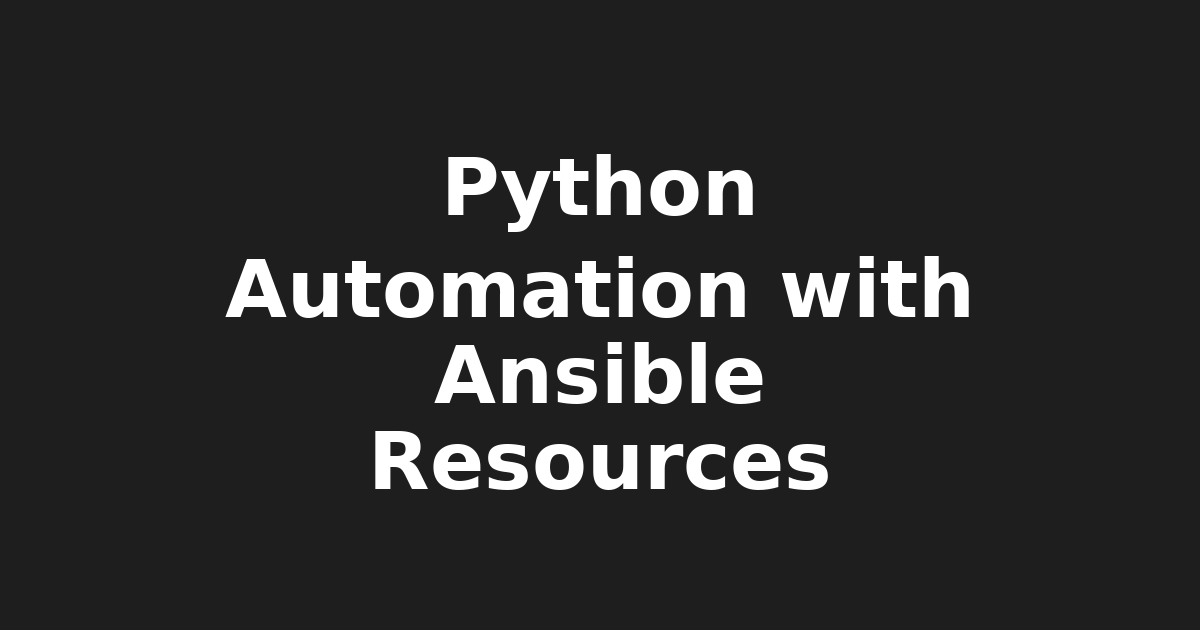Mastering Ansible for DevOps: Simplify IT Infrastructure with Python

🔌 Unleash the Power of Python & Ansible in Your Linux Environment! 🔌
Hey there tech-savvy friends! It's your favorite Linux educator, Josh from KeepItTechie, back with another exciting deep dive into the world of IT automation. Today, we're exploring a trending topic that's causing quite a stir among developers, system administrators, and IT professionals alike – the magical combination of Python and Ansible in a Linux environment!
You might have heard about Ansible before, but if you're new to this open-source software, let me give you a quick rundown. Ansible is the secret weapon that lets you automate repetitive tasks, manage configurations, and deploy applications with ease – all while reducing human error to a minimum. And guess what? It uses a language we all love – Python's more mature cousin, YAML! 🐘
Now, I know what you're thinking. "Another configuration management tool? What makes Ansible special?" Well, let me tell you – with the rise of DevOps practices, Ansible has been gaining popularity like never before. Its simplicity, flexibility, and speed have made it a go-to choice for many in the industry.
But don't just take my word for it! Here are some resources to help you stay updated on the latest news, best practices, and tutorials related to using Python with Ansible:
-
Official Ansible Documentation: https://docs.ansible.com/ansible/latest/index.html – The official docs are a great place to start your journey with Ansible. They provide comprehensive information about its features, usage, and troubleshooting tips.
-
Ansible for DevOps: https://www.ansible.com/resources/use-cases/devops – Explore real-world use cases that demonstrate how Ansible can help you streamline your DevOps workflow.
-
Ansible Galaxy (Ansible module repository): https://galaxy.ansible.com/ – This is the go-to place for discovering and sharing Ansible modules, roles, and playbooks.
-
Ansible Playbook examples on GitHub: https://github.com/ansible/ansible-examples – Browse through various examples to understand how Ansible playbooks are structured and used in practice.
-
The Ansible Blog: https://www.ansible.com/blog – Stay updated on the latest news, releases, and best practices by following the Ansible blog.
Now that you know where to find help, let me share a few tips I've picked up along the way:
-
Start small: Don't try to automate everything at once. Begin with simple tasks and gradually move on to more complex ones as you get comfortable with Ansible.
-
Use comments: Document your playbooks well by adding comments explaining what each part does. This will make it easier for others (and yourself) to understand the logic behind your automation jobs.
-
Learn modules: Familiarize yourself with various built-in and community-created Ansible modules. They can help you achieve a wide range of tasks more efficiently.
As we wrap up, it's important to remember that mastering Python and Ansible isn't just about becoming more efficient – it's about freeing up your valuable time so you can focus on what truly matters: creating innovative solutions and pushing the boundaries of technology! 🚀💻
So, are you ready to take your Linux environment to new heights with Python and Ansible? Let's get automating! Until next time, keep it techie! 🤖💖
🙋♂️ This post was brought to you by Josh from KeepItTechie — helping you break into tech, one command at a time.
